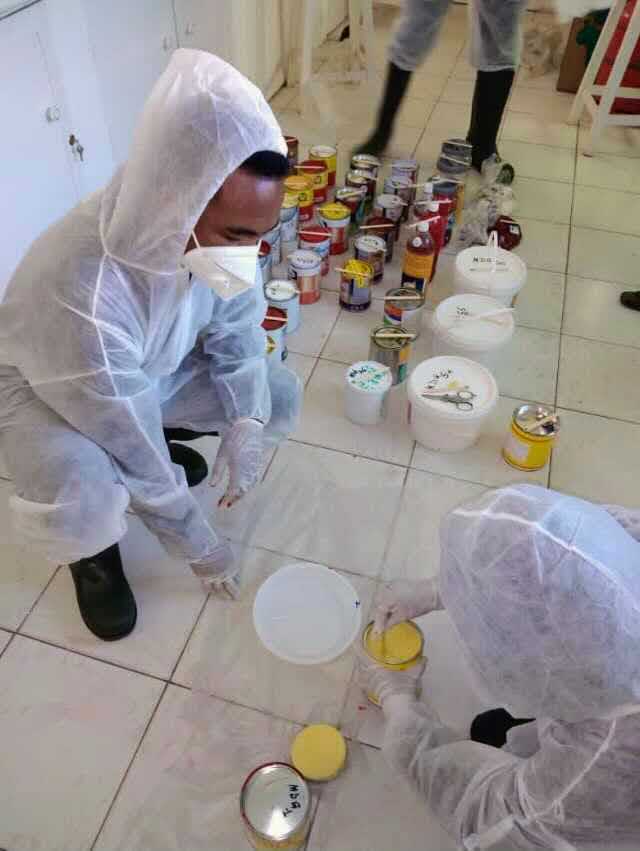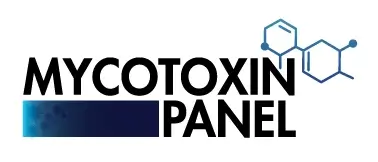The Need of Mycotoxin Evaluating in Agricultural Products to Guarantee Customer Security
The necessity of mycotoxin testing in farming items is an important facet of public health and wellness and safety and security that calls for extensive assessment. Mycotoxins, poisonous substances created by certain fungi, can penetrate various plants, leading to substantial health and wellness threats for consumers, such as cancer causing results and body organ damage.
Comprehending Mycotoxins
Mycotoxins, toxic additional metabolites generated by particular fungi, provide a significant danger to agricultural items and human health and wellness. These compounds are generated by different types of mold and mildews, such as Aspergillus, Fusarium, and Penicillium, which can contaminate plants both pre- and post-harvest - Mycotoxin testing Services. One of the most typical mycotoxins consist of aflatoxins, ochratoxin A, fumonisins, zearalenone, and deoxynivalenol (DON)
Mycotoxin contamination can happen under particular ecological problems, such as high moisture and temperature, which favor the growth of mold and mildew. Agricultural items like grains, nuts, spices, dried out fruits, and coffee are especially susceptible. The presence of mycotoxins in these products can cause considerable financial losses due to reduced plant yields and the requirement for extensive testing and purification procedures.
Recognizing the biochemical nature and formation of mycotoxins is important for developing effective reduction techniques. Study has actually shown that mycotoxins show an array of chemical frameworks and homes, making discovery and removal tough. Advanced logical strategies, consisting of chromatography and mass spectrometry, are utilized to determine and measure mycotoxins in agricultural products, guaranteeing that contamination degrees stay within risk-free limitations established by regulative bodies.
Health Threats of Mycotoxins
Offered the substantial threats associated with mycotoxins in agricultural products, comprehending their effect on health and wellness is extremely important. Mycotoxins, toxic secondary metabolites produced by fungi, position serious risks to both human and animal health and wellness.
Intense mycotoxin poisoning, although less common, can cause prompt and severe illness such as liver damage, intestinal disruptions, and hemorrhaging. Ochratoxin A, another potent mycotoxin, is linked to kidney damage and has prospective carcinogenic effects. Meanwhile, fumonisins, mainly affecting maize, are connected with esophageal cancer and neural tube defects.

Common Sources of Contamination
Understanding the typical resources of contamination is essential for effectively taking care of and mitigating the risks positioned by mycotoxins. Mycotoxins are hazardous second metabolites generated by particular sorts of fungis, which can infect farming items at numerous phases of storage space, handling, and manufacturing. The key resources of contamination consist of area problems, post-harvest handling, and storage atmospheres.
Field conditions play a considerable function, with aspects like climate, plant sensitivity, and dirt wellness affecting fungal development. Plants such as corn, peanuts, wheat, and tree nuts are specifically prone to mycotoxin-producing fungis like Aspergillus, Fusarium, and Penicillium varieties. Insufficient crop rotation and inadequate parasite administration can intensify the danger of contamination.
Post-harvest handling is another crucial stage where contamination can take place. Mechanical damage during harvesting and transport produces entry factors for fungis, while incorrect drying strategies can leave dampness degrees high sufficient to support fungal development.
Storage environments add substantially to contamination risks. Poorly preserved storage centers with high humidity and temperature level levels develop optimal conditions for mycotoxin manufacturing. Routine assessments and correct storage problems are essential in curbing this hazard.
Mycotoxin Evaluating Methods
Reliable administration of mycotoxin contamination pivots not only on identifying potential resources but likewise on implementing durable screening techniques to identify these damaging substances. Mycotoxin testing approaches can be broadly categorized right into chromatographic and immunochemical strategies. High-performance fluid chromatography (HPLC) and gas chromatography-mass spectrometry (GC-MS) represent innovative chromatographic methods understood for their high level of sensitivity and accuracy. These techniques are skilled at evaluating multiple mycotoxins in complicated matrices, making them important for detailed helpful resources analysis.
On the Continue various other hand, enzyme-linked immunosorbent assay (ELISA) and side circulation assays are prominent immunochemical methods. ELISA, in particular, is commonly utilized because of its cost-effectiveness, convenience of usage, and quick turn-around time. Side circulation assays supply fast, on-site screening capabilities, making them suitable for field applications where immediate decisions are necessary.
Additionally, developments in molecular biology have introduced PCR-based methods efficient in spotting mycotoxin-producing fungi at genetic degrees, supplying an anticipating strategy to contamination danger. Integrating these varied techniques enhances the dependability and comprehensiveness of mycotoxin detection, making certain that agricultural products fulfill safety and security standards and shielding customers from possible wellness dangers.
Benefits of Routine Examining

Regular mycotoxin testing provides considerable benefits that dramatically bolster farming safety and top quality. One of the main benefits is the protection of customer health. Mycotoxins, hazardous substances produced by specific fungi, can pollute food and pose severe wellness risks, consisting of cancer cells and severe poisoning. Normal testing makes sure that infected products do not reach customers, thereby alleviating carcinogen.
Moreover, regular testing aids in maintaining the integrity and online reputation of agricultural producers. By rigorously managing and keeping track of mycotoxin degrees, manufacturers can prevent expensive recalls and lawful effects. This not only guarantees compliance with strict global safety and security criteria however likewise fosters consumer trust and commitment.

Final Thought
The requirement of mycotoxin testing in farming items is emphasized by the substantial wellness dangers positioned by these harmful compounds. It boosts the online reputation of manufacturers and fosters trust within the farming website here supply chain, eventually protecting public health.
The need of mycotoxin testing in agricultural items is a crucial aspect of public wellness and security that calls for detailed assessment. Mycotoxins, toxic substances produced by certain fungi, can infiltrate numerous crops, leading to substantial health and wellness risks for customers, such as carcinogenic results and organ damages.Mycotoxins, harmful second metabolites created by particular fungi, offer a considerable risk to farming products and human health and wellness.Given the substantial risks connected with mycotoxins in agricultural products, understanding their effect on health is vital (Mycotoxin testing Services).The necessity of mycotoxin testing in farming products is emphasized by the significant health and wellness threats positioned by these poisonous compounds